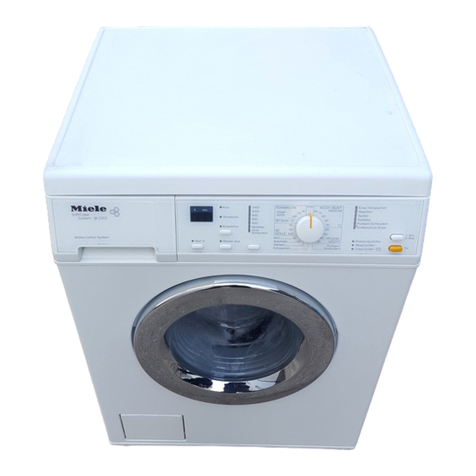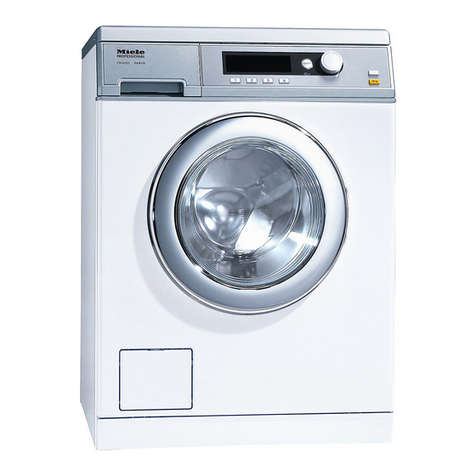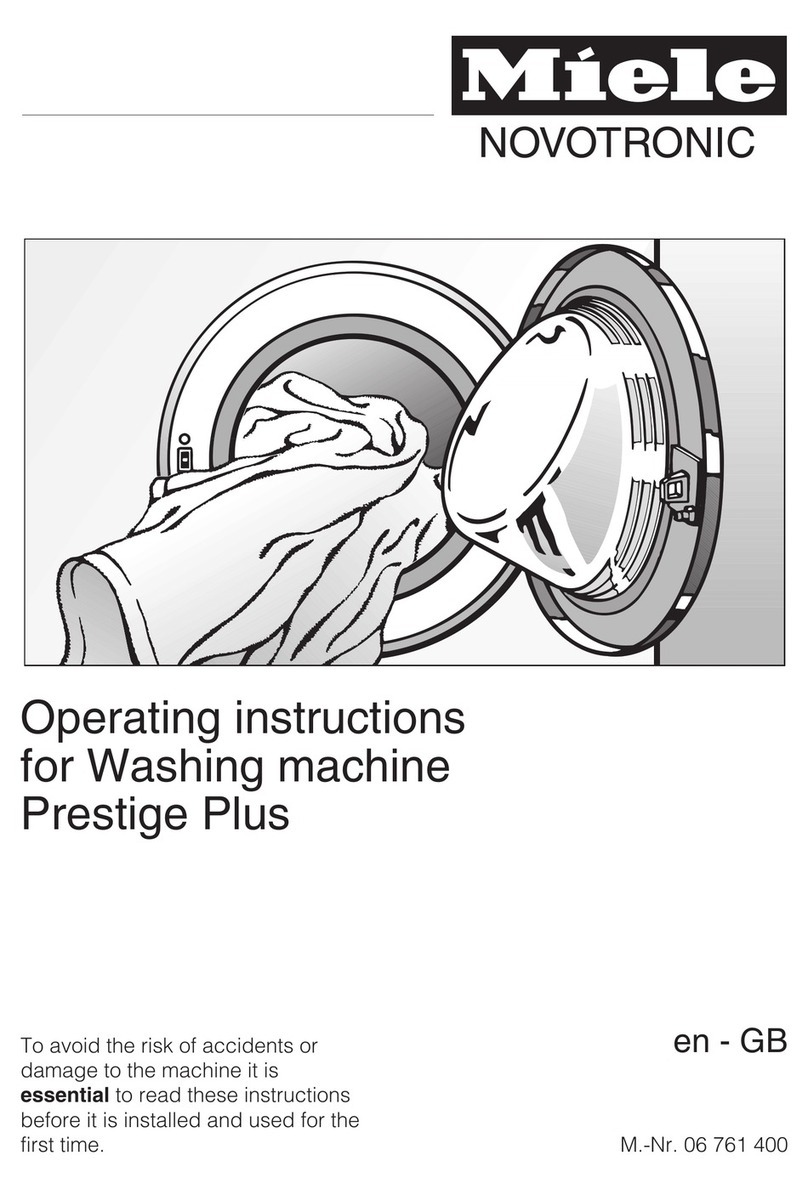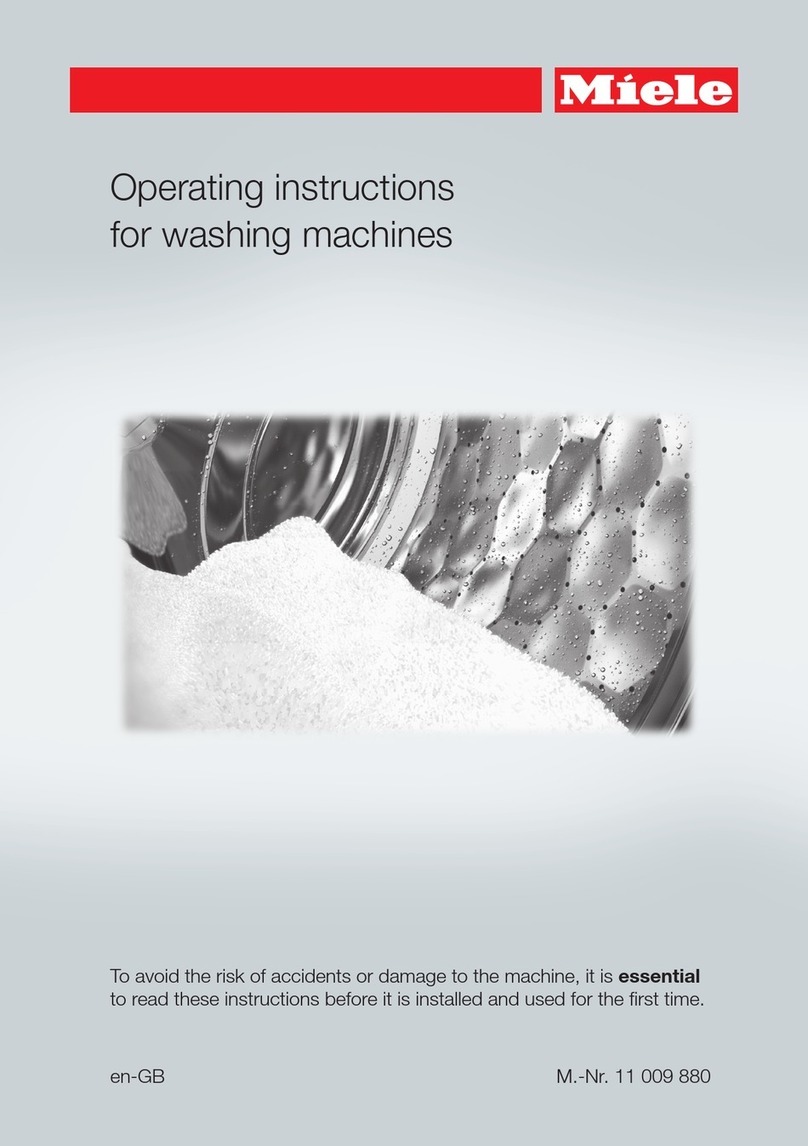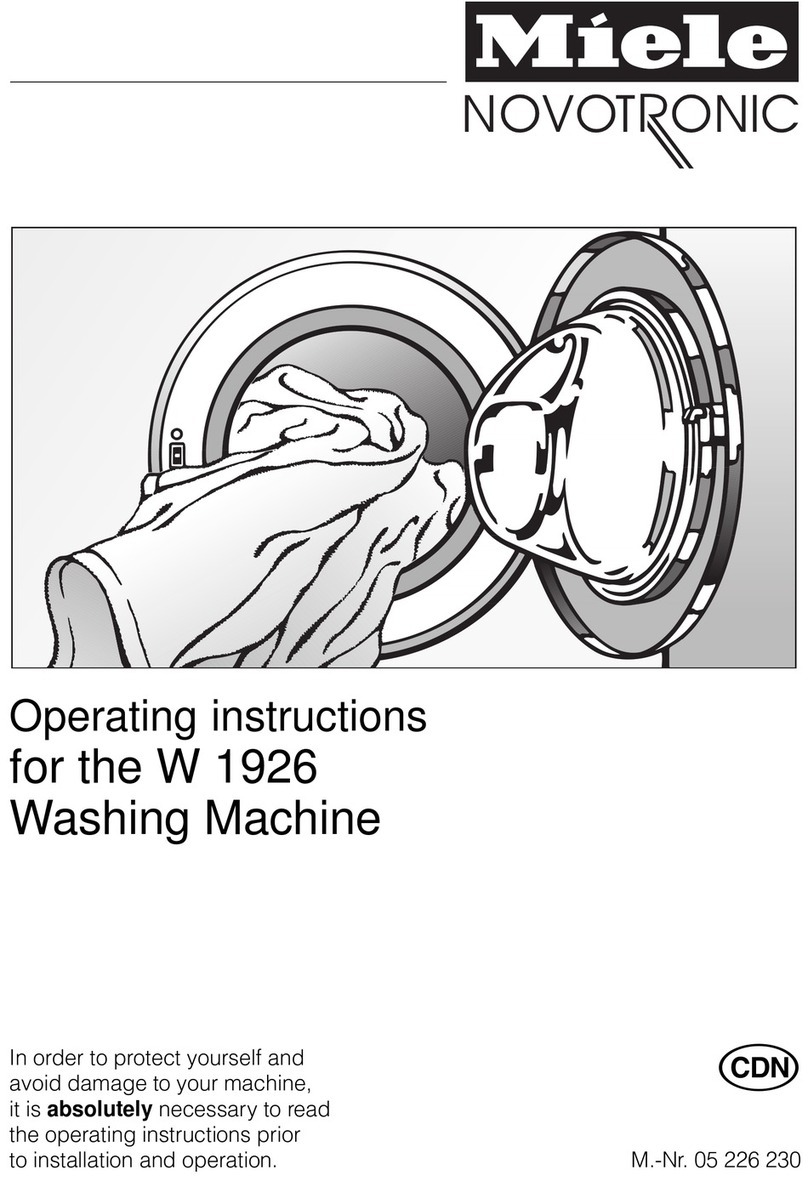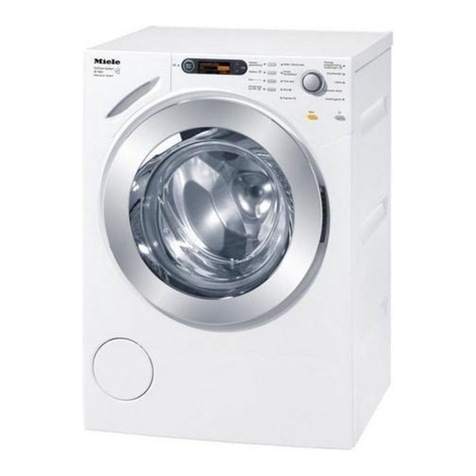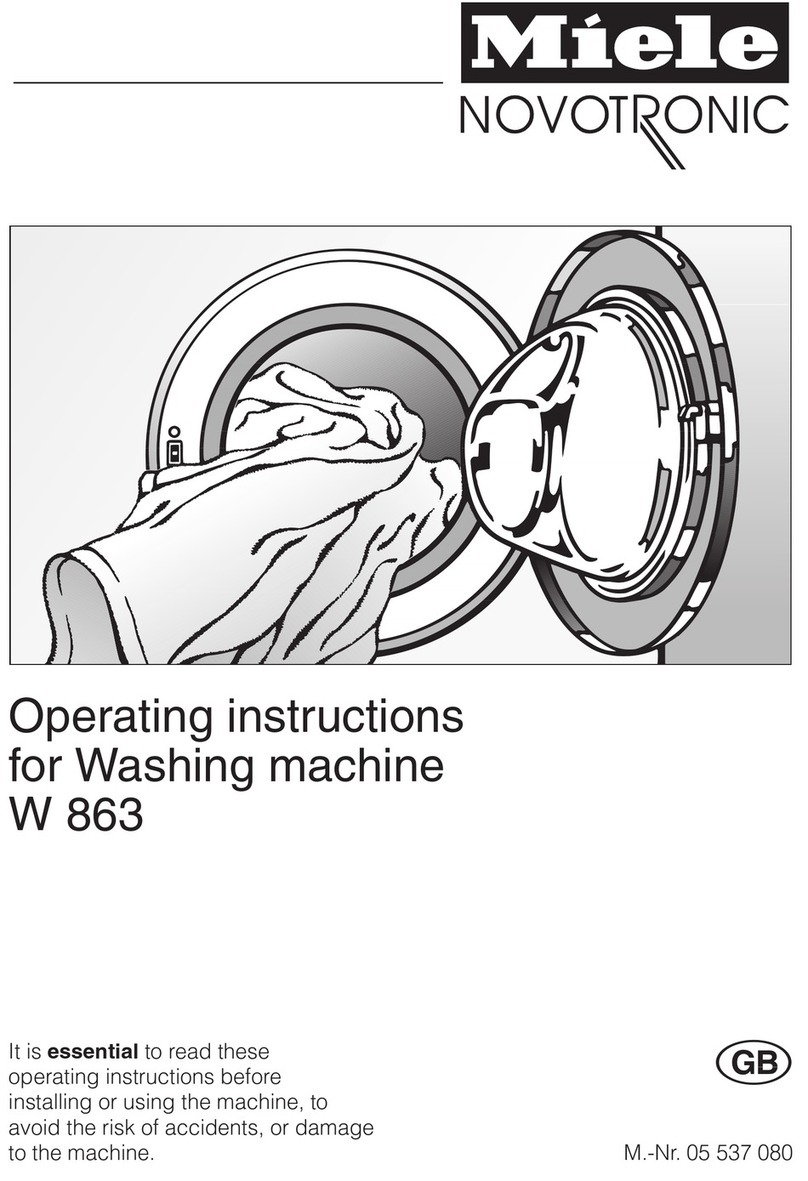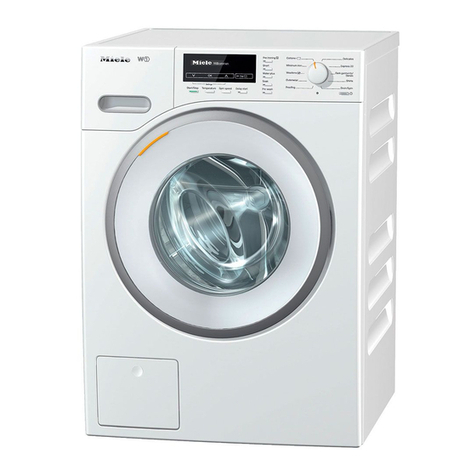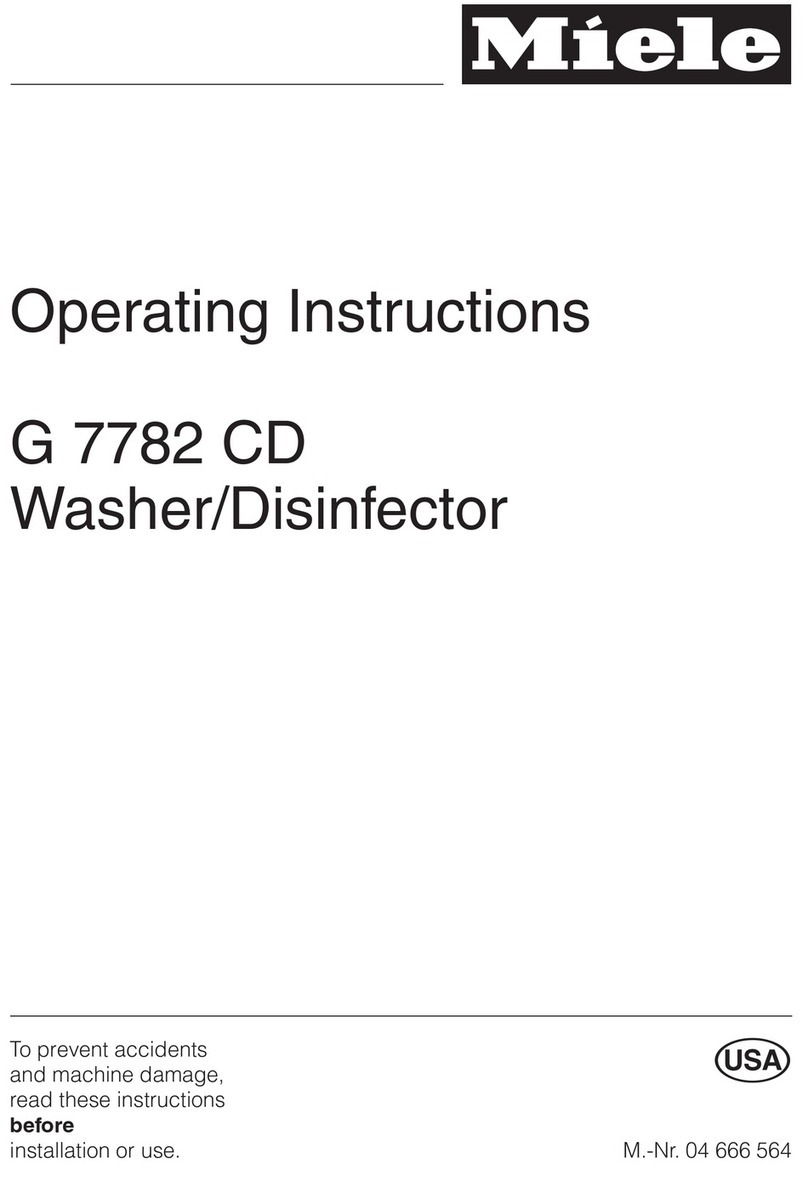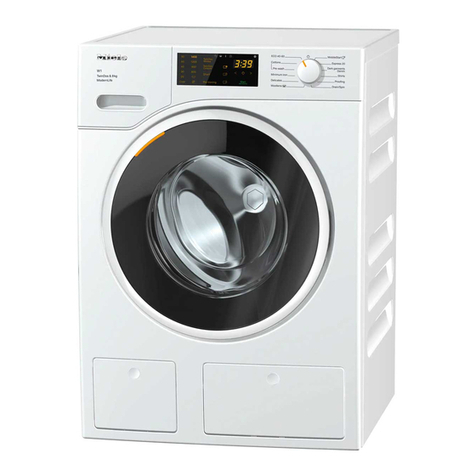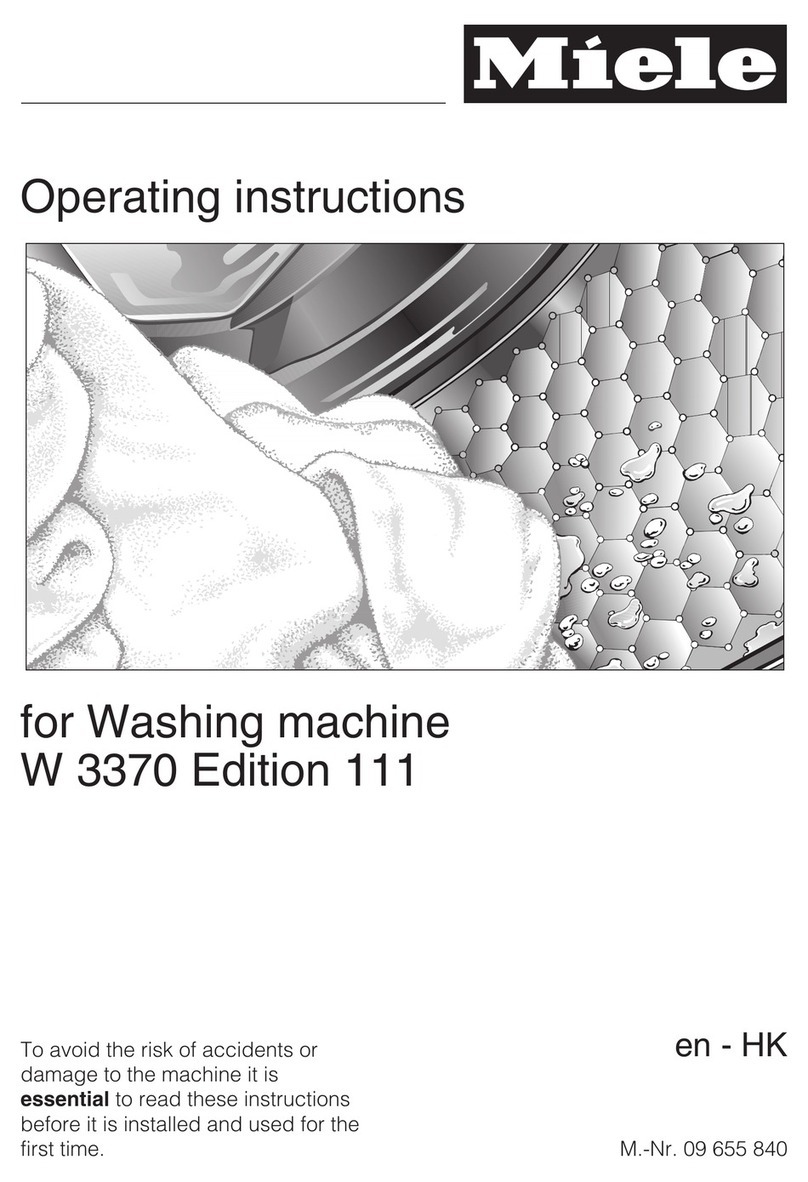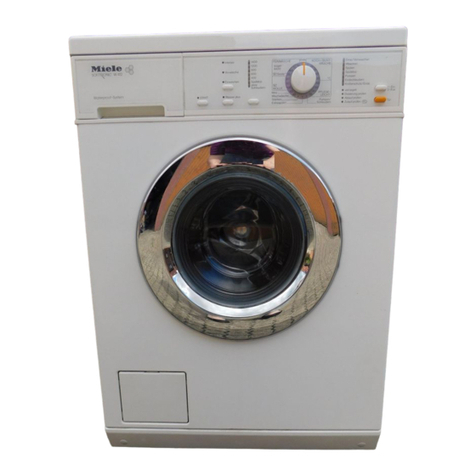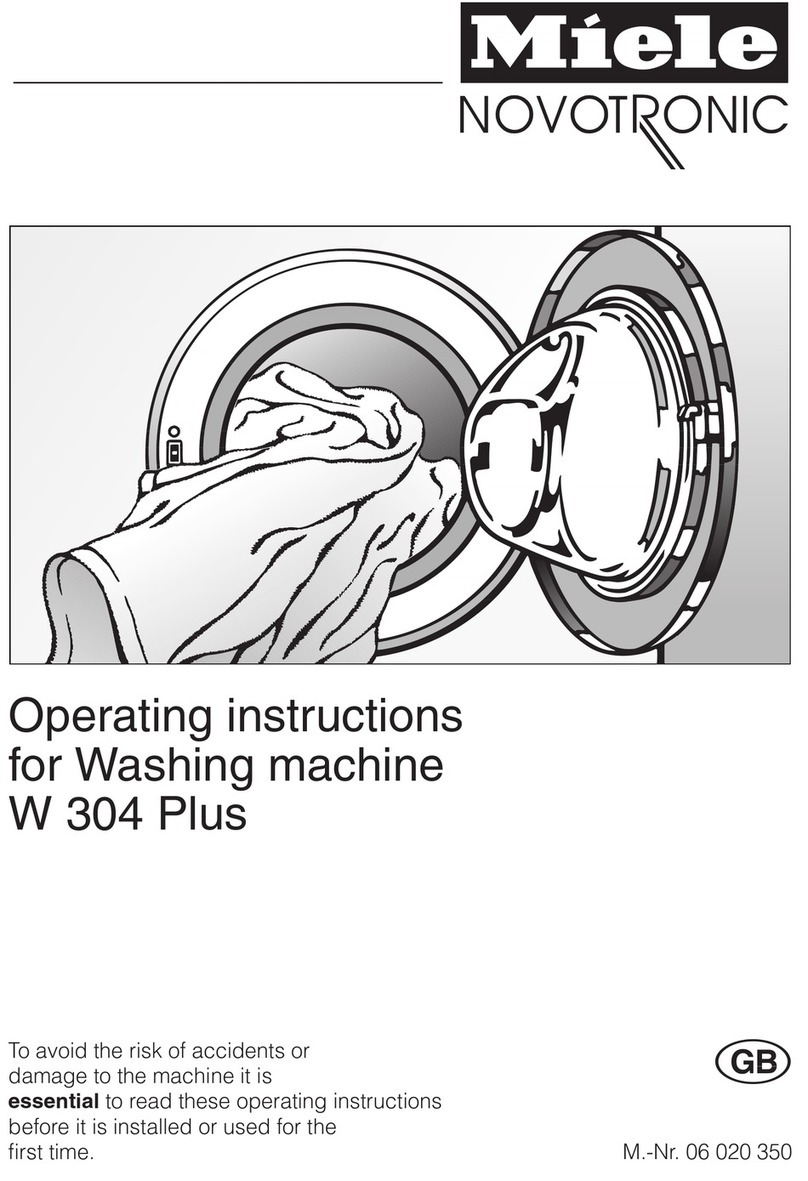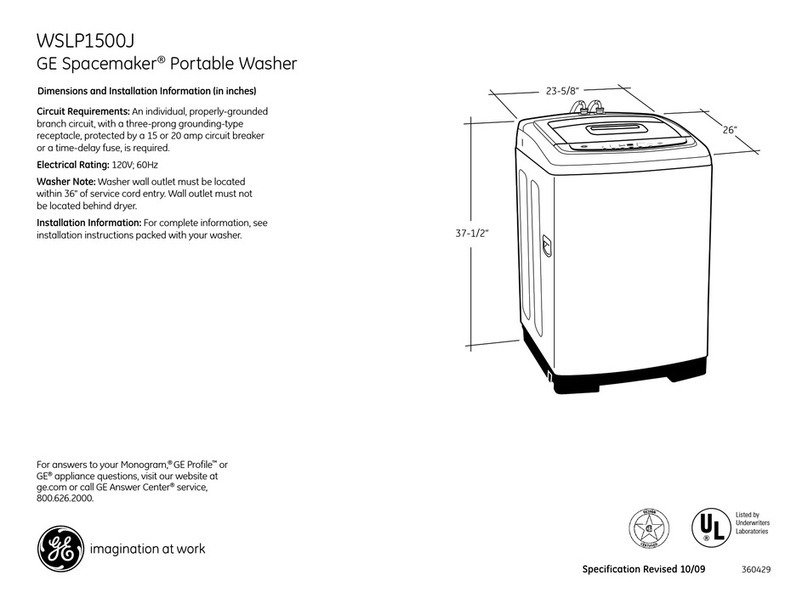The best materials are used in the
manufacture of this machine, and
every care is taken to check all parts.
However, with time, deterioration of
parts can occur, especially with such
components as hoses, giving rise to
leaks. This should be borne in mind if
operating the machine without supervi-
sion. Check the hoses regularly for
signs of wear, and change in good
time, to avoid leaks and subsequent
damage.
Faulty components must only be
replaced by genuine Miele original
spare parts. Only when these parts are
fitted can the safety standards of the
machine be guaranteed.
In countries where there are areas
which may be subject to infestation
by cockroaches or other vermin, pay
particular attention to keeping the appli-
ance and its surroundings in a clean
condition at all times. Any damage
which may be caused by cockroaches
or other vermin will not be covered by
the guarantee.
Use
Do not install the machine in rooms
where temperatures below freezing
may occur. Frozen hoses may burst un-
der pressure.The reliability of the elec-
tronic control unit may be impaired at
temperatures below freezing point.
Before using the machine for the
first time, check that the transit fit-
ting at the rear of the machine has been
removed (see section on "Installation").
During spinning, a transit fitting which is
still in place may result in damage to
both the machine and adjacent furni-
ture or appliances.
Avoid contact of stainless steel sur-
faces (front, lid, casing) with liquid
cleaning and disinfecting agents which
contain chlorine or sodium
hypochlorite. These agents can have a
corrosive effect on stainless steel. Ag-
gressive vapours containing chlorine
bleach can also be corrosive. Do not
store open containers of these agents
near the machine.
Turn off the stopcock if the ma-
chine is to be left for any length of
time (e.g. holiday), especially if there is
no floor drain (gully) in the immediate
vicinity.
Flooding danger
If hooking the drain hose into a
wash basin, check that the water can
drain off quickly enough to prevent the
sink from overflowing.
Make sure the drain hose is secure, so
that the force of the water flowing out of
the hose does not dislodge it. Other-
wise this will result in flooding.
Take care to ensure that foreign ob-
jects (e.g. nails, pins, coins, paper
clips) do not find their way into the ma-
chine with the washing. These may
damage components of the machine
(e.g. suds container, drum), which in
turn can result in damage to the wash-
ing.
Warning and safety instructions
6
